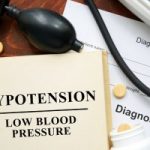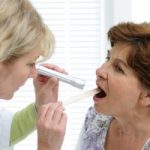April is Parkinson’s Awareness Month, and with so many factors associated with Parkinson’s disease – sleep disorders, Lewy body dementia, and orthostatic hypotension – it’s important that we keep ourselves educated on this progressive neurological disorder. Below is a roundup of just some of Bel Marra Health’s editorials and news stories discussing the factors that surround Parkinson’s disease so you can educate yourself.
 Parkinson’s disease linked to sleep disorders, sleep disturbances
Parkinson’s disease linked to sleep disorders, sleep disturbances
Parkinson’s disease has been linked to sleep disorders and sleep disturbances. Parkinson’s disease is characterized by the loss of brain cells that control movement. Symptoms of Parkinson’s disease can include tremors, stiffness, slowness of movements, as well as balance and coordination problems. Memory problems, depression, and sleep problems can all occur in Parkinson’s disease, too.
Advertisement
Sleep problems and sleep disorders may occur as an early sign of Parkinson’s disease, even before motor symptoms have started. Common sleep disorders experienced in Parkinson’s disease include insomnia, excessive daytime sleepiness, nightmares, sleep attacks, REM sleep behavior disorder (acting out dreams), periodic leg movement disorder, restless leg syndrome, sleep apnea, and nocturia, which is frequent nighttime urination. Continue reading…
 Parkinson’s disease, Lewy body dementia, and REM sleep behavior disorder (RBD) related
Parkinson’s disease, Lewy body dementia, and REM sleep behavior disorder (RBD) related
Recent research has found that Parkinson’s disease, Lewy body dementia, and REM sleep behavior disorder are all related. When we are asleep, our body goes through different sleep phases, the deepest of which is known as rapid eye movement, or REM. During normal REM, our body becomes temporarily paralyzed, and this is where we beginning dreaming. People with REM sleep behavior disorder (RBD) do not become paralyzed and instead act out their dreams. This can be quite dangerous, not only for the individual, but for others around them, too.
Benjamin L. Walter, M.D., director of the Parkinson’s and Movement Disorders Center at University Hospitals Case Medical Center, said “Normally, during REM sleep, reduced serotonergic activity in the brain leads to atonia or loss of muscle tone through action in a network involving brainstem nuclei including the locus subcoeruleus and magnocellularis nucleus. In RBD, this mechanism is dysfunctional, possibly due to pathology in this circuit, and there is not loss of tone during REM sleep.”
It has been found that RBD and neurological disorders are related. In fact, up to 60 percent of Parkinson’s disease patients suffer from RBD and between 80 to 100 percent of Lewy body dementia patients suffer from the sleep disorder as well.
Dr. Walter added, “What these diseases all have in common is that they are synucleinopathies, and they have pathology that involves specific subcortical and brainstem areas, including those involved in the regulation of atonia during REM sleep.” Continue reading…
 Parkinson’s disease patients benefit from aerobic exercise
Parkinson’s disease patients benefit from aerobic exercise
A recent study has found that ongoing aerobic activity may help slow the progression of Parkinson’s disease, which is a disorder that affects the nervous system.
J. Eric Ahlskog, Ph.D., M.D., a neurologist at Mayo Clinic, said, “Aerobic exercise means vigorous exercise, which makes you hot, sweaty and tired.” Examples of aerobic exercise include briskly walking or using an elliptical machine.
Researchers found that exercise helps counter brain shrinkage, slow down brain aging, maintain healthy brain connections, and liberate trophic factors – small proteins that act in similar fashion as fertilizer on a lawn.
Dr. Ahlskog suggests that physical therapy should incorporate more aerobic-style exercises when dealing with Parkinson’s disease patients. Continue reading…
 In Parkinson’s disease, managing orthostatic hypotension improves cognition and balance
In Parkinson’s disease, managing orthostatic hypotension improves cognition and balance
In Parkinson’s disease, managing orthostatic hypotension improves cognition and balance. Orthostatic hypotension is a form of low blood pressure that occurs when going from a sitting or lying position to a standing one. It’s commonly found in Parkinson’s disease, and current recommendations to manage it involve general measures and medications that pose minimum risk or adverse side effects.
It is important to properly manage orthostatic hypotension because it can have implications on cognition and balance. There are both pharmacological and nonpharmacological ways to treat and manage orthostatic hypotension in Parkinson’s disease. Nonpharmacological methods include drinking water and salt, which have been shown to increase plasma volume and maintain blood pressure, and wearing compression stockings so the blood does not rush or pool in the legs.
Pharmacological management methods include medications to better control blood pressure, including Fludrocortisone, Midodrine, Droxidopa, Pyridostigmine, Domperidone, and Yohimbine. Continue reading…
 Saliva gland test may diagnose early Parkinson’s disease
Saliva gland test may diagnose early Parkinson’s disease
Advertisement
New findings suggest that a saliva gland test may better diagnose early Parkinson’s disease. Researchers from the Mayo Clinic and Banner Sun Health Research Institute found that testing a portion of a person’s submandibular gland could spot early Parkinson’s disease.
There is no current accurate testing method for Parkinson’s disease, and so saliva gland testing may offer the accuracy doctors need for the diagnosis. To complete the test, a needle is inserted into the submandibular gland, which is located beneath the jaw, and is used to withdraw necessary tissue from the core of the gland. A protein found in Parkinson’s disease patients is then compared to those being tested to determine if it is present in them or not.
Study author Charles Adler said, “This is the first study demonstrating the value of testing a portion of the submandibular gland to diagnose a living person with early Parkinson’s disease. Making a better diagnosis in living patients is a big step forward in our effort to understand and better treat patients.”
The study involved 25 patients with Parkinson’s disease for less than five years, and 10 control patients. Biopsies from the saliva gland were taken and analyzed for Parkinson’s disease proteins. Continue reading…
